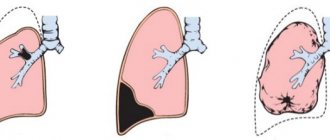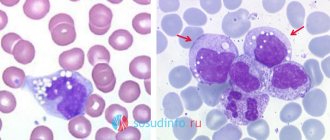Author: Z. Nelly Vladimirovna, laboratory diagnostics doctor, Research Institute of Transfusiology and Medical Biotechnology
Urea or urea or carbonic acid diamide is what ultimately remains of proteins after they break down.
Many people confuse urea with uric acid (the result of purine metabolism) and, it should be noted, they have something related, for example, they both belong to the group of residual nitrogen components, but in clinical laboratory diagnostics these indicators carry different concepts and cannot be considered as one whole.
Factors that caused a change in normal concentration
Why is urea in the blood elevated? Its level depends on 3 factors:
- The amount of amino acids formed after protein metabolism, since ammonia is then produced from them,
- Liver performance (the ornithine cycle is used for urea synthesis),
- Condition of the kidneys (for its excretion).
The causes of increased urea in the blood are conventionally divided into 3 groups:
- Physiological,
- Medicinal,
- Pathological.
Physiological factors include our diet and physical activity. If a person prefers protein foods, and it takes up a large part of his daily menu, then this can cause an excess of urea. The content of this element begins to increase with the consumption of 2.5 grams of protein per 1 kg of weight. Fasting can also cause (NH2)2CO to rise in the blood as large amounts of protein are released from muscle tissue. Physical activity and nervous stress are also factors that lead to the removal of protein from muscles and, as a result, the results of studies on urea will be overestimated.
Deviations in a larger direction can also be caused by medications. The group of medications that give a similar effect include:
- Cephalosporins,
- Anabolics,
- Steroids,
- Corticosteroids,
- Salicylates,
- Androgens,
- tetracycline,
- "Euthirox"
- "Lasix"
- neomycin,
- sulfonamides.
Urea levels may increase when increased protein breakdown and blood changes occur, the reasons for these phenomena are:
- Temperature for 2 weeks,
- Infectious diseases,
- Burns,
- Sepsis,
- Bleeding in the gastrointestinal tract,
- Tumors (leukemia, lymphoma),
- Postoperative period
- Constipation,
- Intoxication with phenol, mercury salts, chloroform,
- Dehydration due to vomiting, diarrhea, or excessive sweating.
But still, the main cause is considered to be kidney dysfunction. Elevated levels of urea in the blood are observed in the following disorders:
- CRF - chronic renal failure. As the urea concentration increases, creatinine also increases. Analyzes show values of more than 10 mmol/l,
- Blockage of the urinary tract by stones or tumors,
- Pyelonephritis,
- Poor blood supply to the kidneys due to heart attack, dehydration, shock.
Causes of increased urea in the blood
Externally, the pathology may not manifest itself in any way, and the patient only complains of weakness, general malaise, and is not able to understand his condition without medical help. The reasons for increased urea levels in the blood can be physiological and pathogenic. In the first case, nothing serious; after some time you need to take a blood test again. In the second case, without eliminating the pathogenic factor, there is no positive dynamics at all. So, due to physiological factors, increased uric acid is provoked by the following anomalies:
- nervous stress;
- excessive physical activity;
- severe fatigue and insomnia;
- excess protein from the daily menu;
- postoperative condition;
- incorrect daily diet;
- progressive pregnancy;
- long-term use of certain medications;
- long fasting, strict diet;
- decrease in pressure due to changing weather.
The pathological reasons why there is an increase in urea in the blood are detailed below:
- typhoid fever;
- rheumatic diseases;
- arterial hypertension;
- burns and extensive soft tissue damage;
- dysentery, other intestinal diseases;
- intestinal obstruction;
- increased activity of gastrointestinal infections;
- endocrine diseases;
- diabetes;
- extensive pathologies of the liver, kidneys;
- shock and sepsis.
- Treatment of gout with medications
- Lactic acid in muscles: how to remove it during training
- How to treat gout at home with folk remedies and medications, massage, baths and diet
Clinical picture
The first indicators of a higher concentration of urea in the blood are:
- Headache,
- Constant fatigue
- Insomnia.
Over time, the situation worsens, toxic substances accumulate and the patient develops new symptoms:
- Low temperature,
- Vomiting or nausea
- Diarrhea,
- Dyspnea,
- Itching,
- Iron deficiency
- Pain in the lumbar region,
- Urinary problems (either too much or too little urine)
- Thirst,
- Impaired taste buds and sense of smell,
- The joints begin to ache and arthralgia appears.
If the patient continues to delay visiting the doctor, then he will have other more dangerous signs:
- Dystrophy of the heart muscle,
- Pulmonary edema,
- Ulcerative gastritis,
- High blood pressure.
External symptoms of severe uremia (excess urea in the blood):
- Dry and pale skin,
- Brittle nails and hair
- Bleeding gums
- Frequent urge to go to the toilet,
- Deterioration of vision,
- Swelling,
- Increased sweating
- Uremic powder is a crystalline coating on the skin, the result of excessive accumulation of urea in the body.
- The skin begins to smell like urine. This scent is impossible to get rid of. The only effective way to reduce urea in the blood is hemodialysis.
Note: The last two symptoms are signs of extreme and end-stage renal failure. Thus, urea can be deposited in the form of crystals, for example, on the pericardium, and each heartbeat is accompanied by a loud shuffling sound, sometimes audible even at a distance. Old doctors called the pericardial friction rub “the death knell of the uremic.” Of course, nowadays such neglected situations are rare.
Symptoms of high urea in the blood
When the urea rises, the patient at first does not even know about the pathological process in his own body. He often complains of increased fatigue, but does not fully understand the cause of its origin. If symptoms constantly increase, this may indicate an advanced clinical picture. In order not to take your condition to extremes, you need to find out the main symptoms of increased urea in the blood:
- anuria;
- headache;
- visual impairment;
- the appearance of edema;
- increased blood pressure;
- tendency to bleed;
- increased signs of dyspepsia;
- nausea, vomiting;
- decline in performance;
- chronic diarrhea.
Diagnostics
Testing for elevated blood urea levels in adults is done through a biochemical test.
Blood is drawn from a vein. A biochemical blood test is carried out in the morning, since the content of the substance fluctuates during the day and an error of 20% is possible. To ensure that the results obtained are accurate and help determine the causes and treatment, biochemistry is taken on an empty stomach. This eliminates third-party factors that can distort the result. For example, a hearty breakfast with protein foods.
All patients admitted for inpatient treatment undergo this examination. In addition, mandatory testing is required for the following conditions:
- Cardiac ischemia,
- Diabetes,
- Hypertension,
- Gastrointestinal diseases in which food absorption is impaired (gluten enteropathy),
- Pregnancy,
- Cirrhosis and hepatitis,
- Infection or inflammation in the kidneys
- Poor results of a general blood test,
- Monitoring the condition of patients on hemodialysis,
- Sepsis and shock
- Control of protein metabolism in athletes.
Below is a breakdown of the increased indicator by severity:
- Extrarenal pathological changes - up to 10 mmol/l, creatinine is normal,
- Mild kidney damage – 10-15.9 mmol/l,
- Moderate renal failure – 16-27 mmol/l,
- Severe kidney dysfunction – 28-35 mmol/l,
- end-stage renal failure with a poor prognosis – more than 50 mmol/l.
Additional research to confirm the diagnosis includes checking:
- Red blood cell level
- Lymphocyte count,
- Blood sugar.
Blood urea level
Before choosing an effective way to reduce the level of uric acid in the blood using home methods, it is important to determine the acceptable limits and consult a doctor. In addition, it is necessary to identify the nature of the pathology and the degree of its neglect. The level of uric acid in the blood is determined by the patient’s age, stipulating the following acceptable limits:
- for infants – 1.3-5.4 mol/l;
- child 1-14 years of age – 1.7-6.6 mol/l;
- pensioners over 60 years old – 2.7-7.6 mol/l.
- Oxalates in urine - what is it? Elevated oxalates in urine - causes, treatment and diet for adults and children
- Gout in men - causes, symptoms, manifestations on the joints, diagnosis, treatment and diet
- Creatinine in the blood is elevated - causes in women, men and children. Blood creatinine levels
Among women
The urea indicator has its own differences by gender. If elevated, a serious illness of the body cannot be ruled out. For example, the level of urea in the blood of women is lower than that of men due to the physiological characteristics of the body. Before looking for reasons, it is worth clarifying that for representatives of the fairer sex up to 60 years of age, the normal limit is 2.3-6.5 mmol/l.
In men
For representatives of the stronger sex, the permissible interval is increased, so it is not worth comparing with female indicators. The level of urea in the blood of men ranges from 3.7 to 7.5 mmol/l. It is important to promptly determine the main cause of such a serious disorder and treat it with medications. It's time to figure out what it means when uric acid in the blood is elevated.
What can high urea levels cause?
Urea in small quantities is quite safe and non-toxic. But a high level is a sign of kidney dysfunction, which means that toxic metabolic elements are not removed from the body by the kidneys. This leads to water-salt and acid-base imbalance. Hormonal disturbances occur, gradually leading to multiple organ failure.
It is also important that dangerous ammonia accumulates in the body and tissue poisoning occurs. If the level of urea is not reduced in time, then the entire body becomes saturated with it, and irreversible processes (necrosis) begin in the brain cells. Against this background, the patient may develop psychological and neurological diseases.
What causes low urea levels?
Basically, a sharp decrease in urea content is explained by diseases that attack liver cells. This group includes all types of cirrhosis, hepatitis, polycystic disease, hepatosis, liver failure, fibroma, hepatocellular carcinoma, hemangioma, phosphorus or arsenic poisoning.
No less common causes of low urea are helminthic infestation, malabsorption (improper absorption of nutrients in the gastrointestinal tract), as well as chronic pancreatitis.
Sometimes a failure in the endocrine system provokes the same lack of urea. Mostly we are talking about dysfunction of the pituitary gland (acromegaly) and the thyroid gland (hypothyroidism).
Uncontrolled consumption of water on a regular basis can lead to hyperhydration (water oversaturation of the body), which helps reduce the concentration of urea in the blood. Biochemical analysis sometimes registers a deficiency of carbonic acid diamide if the patient is an adherent of protein-free diets, strength training and vegetarianism.
During the period of hemodialysis (hardware purification of blood outside the renal system), a completely natural, stable lack of urea will be observed.
It is necessary to recall the existence of drugs that reduce carbamide without harm to human health. The most popular products of this profile include Insulin Lizpro, Chitosan (biological supplement), Somatropin (growth hormone), Hepa-Merz, etc.
Measures to stabilize urea levels
If blood urea is elevated, it is important to identify the causes of the increase in order to determine how to treat them. The following measures will help reduce urea levels:
- Review of diet (reducing the amount of protein),
- Reducing stressful situations and hypothermia,
- Elimination of physical overstrain,
- Stabilization of water-salt balance,
- Prevention of chronic and acute kidney diseases.
If the upward deviation was caused by poor nutrition, the patient is prescribed a diet and reduced physical activity. This should help the muscle tissue return to normal and the kidneys to remove excess residual nitrogen components from the body.
Nutritionists have selected a list of foods that reduce urea levels in the blood. A list of forbidden “menu ingredients” was also created. There are also several recommendations on how to remove excess and prevent the problem from recurring in the future:
- There should be 6 meals a day,
- Drink at least 2 liters of water per day,
- Fasting days no more than once a week.
The list of permitted foods is quite extensive and varied, so there is no particular discomfort when following the diet:
- Rabbit meat,
- Chicken,
- Turkey,
- Dairy products,
- Eggs,
- Fish with a fat content below 8%
- Pasta and cereals 1-2 times a week,
- Vegetables,
- Fruits,
- Vegetable and olive oil,
- Juices and decoctions,
- Weak tea and coffee
- From sweets: jelly, jam, jam, marmalade.
You should reduce your consumption, or better yet, completely eliminate it from your diet:
- Sausages,
- Canned food – meat and fish,
- Mayonnaise, ketchup, sauces,
- Smoked meats,
- Salty dishes
- Fatty meat and fish, as well as broths based on them,
- Sorrel,
- Mushrooms,
- cauliflower,
- Soda,
- Alcohol,
- Strong coffee and tea.
If urea levels rise, then the doctor will prescribe infusions of crystalloid solutions to reduce its concentration. If such therapy does not help, the patient is prescribed hemodialysis, since there are no drugs to reduce uremia. Another way to get rid of uremia is a kidney transplant.
The importance of urea for the body
In order to determine the main role of urea, it is necessary to consider the process of its formation in stages:
- At the time of the next meal, the consumed food enters the stomach, where, under the influence of special enzymes, it begins to break down into simpler components - amino acids.
- One part of the formed chemical compounds then takes part in the synthesis of vitamins, hormones, and also restores organ tissue and muscle fibers. The other part breaks down into ammonia, water and carbon dioxide, resulting in the release of energy.
- Ammonia, being a toxic substance, is transported to the liver. With the help of multiple complex reactions, gland cells convert it into safe urea, which, like a capsule, “seals” the dangerous element and is sent through the bloodstream to the kidneys.
- After blood filtration, all end products that are of no value to the body are excreted along with urine during the process of emptying the bladder.
Structure of the urea molecule
Therefore, urea is responsible for preventing poisoning from toxic components formed during the breakdown of proteins. The level of urea in the blood shows abnormalities that primarily affect the liver, organs of the urinary system, muscles, bone segments, joints, pancreas, heart and brain. Therefore, the parameter under consideration is of particular value when deciphering the results written in the biochemical analysis form.
Treatment
Treatment depends on the underlying cause
Treatment depends on the factors causing the low urea level. If the reason lies in a protein-poor diet, you will need to review your menu and include products containing both plant and animal protein.
Liver diseases require differential diagnosis and treatment. In case of pathological processes in the liver due to the use of alcohol, medications or toxic substances, their use should be stopped first. Then the doctor can prescribe hepatoprotectors, antiviral drugs, and detoxification agents. If necessary, surgical intervention is performed.
Treatment of malabsorption syndrome includes taking hormonal drugs, antibiotics, and enzyme preparations. A mandatory element of therapy is dietary correction.
After eliminating the factors that caused the low level, the urea concentration will increase to standard values.
Reasons for the downgrade
A decrease in this indicator is observed infrequently. Since urea is formed in the liver, its reduced level is most often associated with a decrease in the functions of this organ. In addition, the decrease may be due to gastrointestinal diseases, in particular impaired absorption of substances that form proteins.
The causes of low levels can be both physiological and pathological. The first includes:
- pregnancy, during which the water content in the blood increases due to physiological reasons (protein is intensively consumed due to fetal growth); in addition, during the gestation period, a drop in level may be associated with increased fluid consumption; in later stages - with increased protein utilization;
- hyperhydration (excess water) with parenteral (bypassing the gastrointestinal tract) administration of fluid;
- hemodialysis (blood purification without the participation of the kidneys);
- diet poor in protein products, diets, vegetarianism.
One of the causes of low urea is cirrhosis of the liver.
Pathological causes include the following diseases:
- chronic pancreatitis;
- malabsorption in the intestine;
- enzyme deficiency (congenital) that is involved in the formation of urea;
- nephrotic syndrome;
- helminthic infestations;
- complications after intestinal surgery.
Very low urea is observed in severe and life-threatening diseases, namely:
You can also read: Why is uric acid in the blood low?
- malignant tumors;
- cirrhosis of the liver;
- acute liver necrosis;
- liver failure caused by poisoning with various hepatotropic toxins, including arsenic, phosphorus;
- hepatic coma;
- viral hepatitis;
- alcoholic hepatitis.
Exceeded performance
An increase in urea concentration may have nothing to do with kidney or liver pathologies, or with increased consumption of protein foods. Because there are a number of reasons that do not indicate the presence of the disease. For example, this is stress, intense physical activity, taking medications (steroids, anabolic steroids, androgens, salicylates, etc.). But the key reason for exceeding the indicators is problems with the kidneys, namely, violations of their excretory function:
- glomerulonephritis;
- acute renal failure;
- pyelonephritis;
- insufficient blood supply to the kidneys due to cardiovascular pathologies, dehydration, shock;
- blockage of the urinary ducts (tumors, stones, sand).
An increase in urea concentration is possible due to the presence of serious diseases that increase protein synthesis. These are: hematological diseases, infectious, oncological and intestinal diseases.
To make a correct diagnosis, the patient submits not only blood for analysis, but also urine, in which the urea content is also determined. To correctly diagnose the disease, indicators such as levels of glucose, lymphocytes and red blood cells are taken into account.
In what cases does a deviation from the norm not indicate pathology?
According to the rules, any test must be taken in the morning on an empty stomach , biochemistry is no exception. There are times when urea is elevated, but there is no cause for concern. For example:
- Strong and frequent physical activity.
- Constant stress.
- Abuse of protein foods or fasting.
- Taking certain medications (Corticosteroids, anabolics, etc.).
To identify pathology, it is necessary to donate blood from a vein.
In order for the urea indicator to be accurate, a number of rules must be followed:
- Do not overload the body 24 hours before the examination.
- The day before the test, give up meat, fish and sweets.
- In the morning it is better not to drink or eat anything.
- Avoid stress.
When is research needed and how is it carried out?
To determine the amount of urea and creatinine, a biochemical analysis must be performed. The material is taken from a vein on the inside of the elbow. This must be done in the morning on an empty stomach; you can drink only plain water before donation. After receiving the results, the condition and performance of the liver and kidneys are determined.
The liver produces ammonia, and after the breakdown of proteins into amino acids, it generates nitrogen, which, with oxygen, carbon and hydrogen, forms uric acid. From the liver, through the blood, urea penetrates into the kidneys, where filtration occurs, and it ends up in the urine.
The study is prescribed for the following phenomena:
- Disorientation is a disorder of consciousness in which it is difficult for a person to think, act, or navigate quickly and correctly.
- Chronic fatigue, lethargy.
- Paleness of the skin.
- Dry mouth.
- Low level of urine output.
- Heart rhythm disturbances.
- Fainting conditions.
- Swelling of the limbs.
What violations do changes in indicators indicate?
What specific deviations are indicated by changes in the concentration of urea in the patient’s biological material:
- Kidneys. Any diseases and functional conditions lead to an increase in the content of the compound in question in the blood. Why is that? This occurs due to the fact that the substance is excreted through the excretory tract, in the urine.
If the paired organ is not working actively enough and there are some malfunctions, the compound begins to be absorbed back into the blood. Thus, even with normal production volumes, the concentration increases. How much depends on the specific diagnosis or condition.
- The amount of protein in the body. It increases after injuries, disorders such as heart attacks, burns and others. There can be many options. Since urea is precisely a protein breakdown product, when there is a large amount of it, its level also changes.
- Liver condition. The metabolism of compounds and their transformation to urea occurs precisely in this organ. If normal operation is disrupted, a decrease in the speed and quality of synthesis is observed. The level drops, which is clearly visible from the results of biochemical analysis.
- The amount of blood circulating in the body. All deviations lead to a drop in urea levels. This is relatively normal.
Any disorders result in a decrease in the rate of nitrogen excretion and poisoning of the body. Depending on the specific disease, the degree of impairment may be one or another. Usually there is no danger, but in the medium and long term it arises.
Traditional methods of treatment
To lower urea levels, diuretic teas are used to help remove it from the body. This can be a decoction of rose hips, black currants, parsley root, St. John's wort, linden, etc.
- To prepare the infusion you will need to take 2 tbsp. licorice root and mix it with 1 glass of water, stir and simmer on low heat for 10 minutes. Then let it cool, strain and take 0.5 cups orally before meals 3 times a day.
- You need to take a glass of boiling water and add 2 tbsp. bearberry. Then cook it in a water bath until it boils. Then cool, strain and take 2 tbsp half an hour before meals.
- Take dandelion root, wheatgrass, and black currant leaves in equal proportions, mix and pour boiling water over it. After which everything needs to be cooked over low heat. Drink 2 tbsp. every day 3 times.
- Take hernia grass, horsetail, steel grass root and lovage in equal proportions and add 1 liter of water. Bring the resulting mass to a boil, cool, strain and drink half an hour before meals, 2 times a day, 2 tbsp.
Infusions and decoctions of medicinal herbs will help cope with the disease.
Several recipes
To help cope with the disease:
- Lingonberry tincture. To do this you will need to take 1 tsp. dry leaves, previously crushed, and pour boiled water (1 tbsp.). After half an hour, strain the broth and take a sip every hour.
- Nettle juice. Nettle is an excellent remedy for many diseases; it also lowers the level of urea in the blood. To get rid of the disease you need to take a branch of young nettle, rinse and squeeze out the juice. Take 1 tsp of this product orally. 3 times a day.
- A decoction of sage, burdock, dandelion and birch bark accelerates the removal of urea from the blood. To prepare, take each of the herbs in equal proportions and mix with 1 cup of boiling water. Then let it brew, strain and consume 3 tbsp. before bedtime.
- Chopped bean pods in the amount of 1 tbsp. pour 1 liter of boiled water. This solution should be boiled for 2 hours over low heat, then cooled, strained and taken orally, 1 tbsp. 3 times a day.
- Birch decoction. For cooking you will need 2 tbsp. boiling water, to which 2 tbsp. crushed leaves. The resulting mixture must be put on the fire and brought to a boil, then let simmer over low heat for another 10 minutes. When the infusion has cooled, strain and consume 2 tbsp orally during meals.
- Decoction and infusion of apples. To prepare, you will need 3-5 medium apples, which should be cut into small slices and thrown into boiled water (1 liter). Boil for half an hour and let it brew for 5 hours. Drink this infusion in small portions throughout the day.
- A mixture of honey and raisins. Take 1 kg of honey and the same amount of raisins. In the morning, on an empty stomach, eat a handful of raisins, then do not eat for 2 hours. The next morning, start with honey - 1 tablespoon, and then also do not eat any food for 2 hours.
- A mixture of parsley and celery will help get rid of salt deposits. To prepare, you will need 100 grams of each product, which is pre-cut and then filled with 0.5 liters of water. The resulting mixture is boiled for 7-9 minutes, then infused for half an hour and filtered. Add 1 tbsp to the resulting decoction. honey The mixture should be consumed throughout the day in small portions.
Urea values and necessary tests
Blood tests should be carried out as part of regular preventive examinations, especially after 50 years of age. If studies have shown serious abnormalities in urea (low or high saturation), this means that liver or kidney function is impaired. A blood urea test is performed to confirm the diagnosis and adjust treatment. The test is done if patients experience the following symptoms:
- frequent urination;
- colorless, dark, bloody urine, foam in the urine;
- bone pain;
- backache;
- convulsions;
- heaviness in the legs;
- great fatigue;
- sleep problems;
- poor appetite;
- swelling;
- itching
The laboratory will perform biochemical tests, which include analysis for residual nitrogen (all non-protein nitrogen in the blood), uric acid, urea, and creatinine. Along with a biochemical blood test, the doctor may require a general urine test. Decoding the data obtained, along with general symptoms, makes it possible to understand the cause of the disease. Typically, a blood urea test must be taken on an empty stomach. You should not eat food that contains protein the day before, and avoid drinking wine and medicinal substances.
What is urea in urine and when is it tested?
For reference. The level of urea in urine is included in the list of basic tests carried out to monitor the excretory capacity of the kidneys. The indicator of urea and creatinine in blood plasma and urine, as well as their ratio, allows us to assess the degree of renal dysfunction and make a differential diagnosis between prerenal and postrenal azotemia.
Assessing the level of urea in urine is usually carried out when detecting its high level in the blood, to clarify the diagnosis and assess the excretory capacity of the kidneys.
Possible complications
An increased level of urea is dangerous because prolonged exposure to this state leads to acute or chronic uremia - poisoning by products of protein metabolism. If uremia is not treated, uremic coma can occur.
Gastric juice can accumulate excess urea, causing gastritis and colitis. These diseases are accompanied by vomiting and bloody diarrhea.
Possible disorders of the central nervous system:
- fatigue;
- insomnia;
- convulsions;
- breathing problems;
- deterioration of vision up to blindness.











